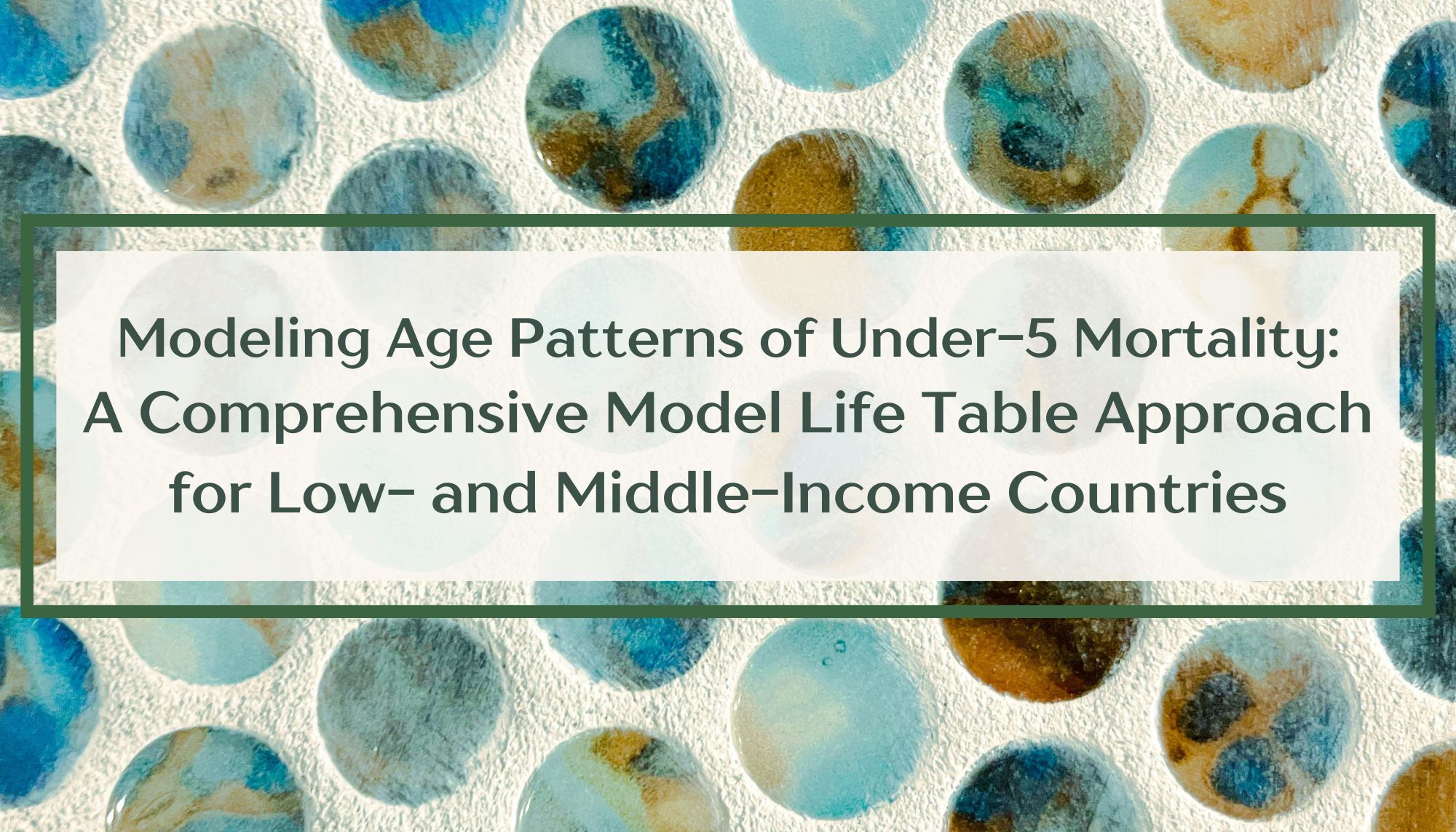
Commons Link
Modeling Age Patterns of Under-5 Mortality: A Comprehensive Model Life Table Approach for Low- and Middle-Income Countries
Working Paper Number
225-120
Publication Year
2025
Paper Abstract
Understanding how the risk of death varies across the 0–5 age range is essential for monitoring child health. Existing model life tables, including the log-quadratic model—denoted here model A—have been based on data from high-income countries and do not reflect the age patterns of mortality found in most part of sub-Saharan Africa and south Asia—two world regions that now account for approximately 80% of global under-5 deaths. In this paper, we present a new model life table approach—model B—designed to summarize the age distribution of under-5 mortality in these settings. Like model A, model B uses a log quadratic specification but is estimated from Demographic and Health Surveys. It includes 22 fine disaggregated age groups, allowing for flexible application across data inputs. We demonstrate that the new model captures key features of under-5 mortality in sub-Saharan Africa and south Asia including excess risks of dying before 28 days and after 12 months of age. Model B provides accurate estimates across a wide range of age patterns, and in combination with Model A, offers a comprehensive modeling framework to best represent child mortality globally.
Acknowledgements
Research reported in this manuscript was supported by the Eunice Kennedy Shriver National Institute of Child Health and Human Development (NICHD) of the National Institutes of Health (NIH) under award number R01HD090082. The authors would like to thank the members of the Technical Advisory Group of the United Nations Inter-Agency Group for Child Mortality Estimation (UN IGME) for their feedback.